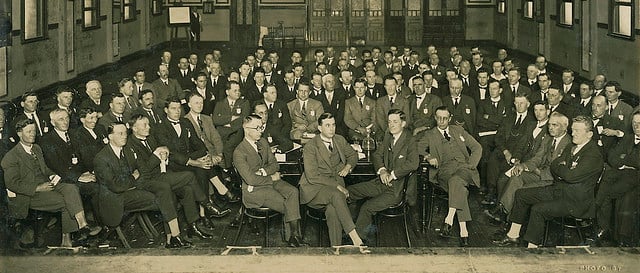
4 min read
Big changes are happening in the workplace. Will this make women more valued as leaders?
Can we take the following as fact? When it comes to hiring and valuing women – and women leaders – on par with men, we’re still not there. There's no shortage of data around wage gaps, blind resume studies showing unconscious bias, studies of leadership, and Board diversity.
That may be about to change – not overnight, but as we live through the many ways our world of work is changing.
Why? First, while we may still be an economic slump, the war for talent continues – and the demographics we face tell us it might just get tougher. That talent includes leaders, and most organizations I work with tell me that securing great leadership talent is absolutely mission critical. If organizations are going to succeed at attracting and retaining the leaders they need, they will simply have to be good at tapping into talent of both genders. Those who are better at that than their competition for talent will have the advantage, which means that organizations will hone their ability to hire, retain, grow and engage women – and in turn those women will have more power in the equation.
But there’s more to it. We’ve seen good arguments for years around the business case for hiring women to achieve better leadership and better results. Based on that powerful business case, leading organizations are starting to promote the hiring, promotion and development of women, driven by a desire to win, rather than values around gender equality. (Those values are important, but the challenge is that they are not compelling to those who don’t already share them.)
We are about to accelerate our shift: the world of work is changing. Our research has identified six megatrends impacting how organizations and individuals work.
There are many common threads, many ways we can connect the dots amongst these megatrends. One that I see as key – and that will resonate with readers of the Jostle Blog – is the continued shift to more complex organization structures.
Where we sit today is that most organizations are still trying to make matrix structures work, let alone the more complex and layered structures we are evolving to, with teams overlapping, forming and reforming…. In fact these changes already here for many of us; we just struggle to name, map and manage them. Work is rarely happening within the solid lines of our org charts.
Leading in these environments is different from a classic hierarchy, where a manager has power through their position, leads a pool of resources under their sole authority and control, and manages by directing work. The more dotted lines, informal relationships, ad hoc teaming, stakeholder management, etc…. the more we need to inspire, influence, rapidly build teams, accelerate relationships.
This is an area of study for Hay Group and others. We’ve defined what the key competencies for those leaders are going to be. The behaviours leaders will need to be successful in the matrix include things like the ability to lead a team of executives who may be peers; to build broad networks, externally and internally; to manage cross-cultural demands; to foster communications…. These needs are already showing up as a priority for many organizations, and we predict that trend to continue.
Here’s the kicker, and the reason why you will want make sure you’ve got the hiring, development, reward and promotion of women figured out: women have real strengths that map to these emerging workplace needs. I anticipate that we may find ourselves with a very different stereotype of the strong leader in 2030 – the image springs to mind may be a woman, and one whose differentiating strengths are less about decisiveness and command, and more about influence and connections.
Let’s get the caveats out there. All women are different. All men are different. Many men have strengths here too. And perhaps the shift in what it takes to be successful will also change how all of us behave.
In fact, we don’t need to look at gender differences to make the argument that we need great women leaders, and lots of them – we’ve established that leaders are key to success, that we don’t have enough of them, and that we are going to be demanding even more of them.
But if you accept that gender difference is real, and if you can intuitively accept what these studies are telling us, then there’s even more reason to be ready for the shift. Attitudes (conscious and unconscious), practices, business processes, systems – it’s time to think how you’re going to compete for this key talent and help it to perform at its best.
Read more by
Rachel O’Connor
Jostle’s employee success platform is where everyone connects, communicates, and celebrates at work. Find out more at jostle.me. © 2009–2024 Jostle Corporation. All rights reserved.